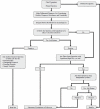Evidence-based history taking under "time constraint"
- PMID: 22091274
- PMCID: PMC3214363
Evidence-based history taking under "time constraint"
Abstract
Physicians all through the world visit patients under time limitations. The most important troubled clinical skill under "time constraint" is the diagnostic approach. In this situation, clinicians need some diagnostic approaches to reduce both diagnostic time and errors. It seems that highly experienced physicians utilize some special tactics in this regard. Evidence-based medicine (EBM) as a relatively new paradigm for clinical practice stresses on using research evidences in diagnostic evaluations. The authors aimed to evaluate experts' strategies and assess what EBM can add to these tactics. They reviewed diagnostic strategies of some veteran internists in their busy outpatient clinics and proposed an evidence-based diagnostic model engaging clinical experience and research evidence. It appears that every clinician utilizes a set of "key pointer" questions for decision-making. In addition to use of evidence-based resources for making differential diagnosis and estimating utility of various diseases, clinicians should use "key pointers" with significant likelihood ratios and from independent systems to reduce time and errors of history taking. Clinical trainees can improve their practice by constructing their own set of pointers from valid research evidences. Using this diagnostic model, EBM can help physicians to struggle against their "time constraint".
Keywords: Clinical Competence; Diagnosis; Evidence-Based Medicine; Hospital; Outpatient Clinics; Time Management.
Conflict of interest statement
Authors have no conflict of interests.
Figures
References
LinkOut - more resources
Full Text Sources

